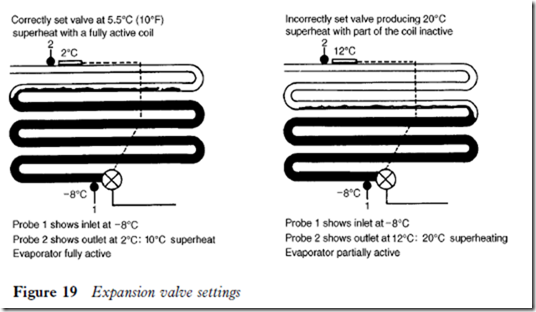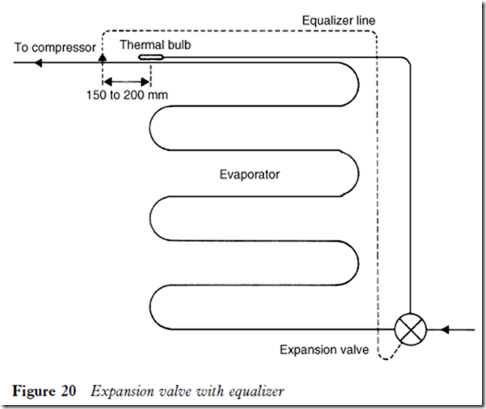Pressure drop: external equalizing
A low evaporating pressure can be due to pressure drop through the evaporator caused by friction, the length of the evaporator tubing, and the number of return bends employed in the evaporator design. If this occurs, the saturation temperature of the refrigerant may be lower at the outlet of the evaporator than at the inlet.
When an evaporator has a pressure drop in excess of 5 psig or 0.3 bar it is essential to employ a thermostatic expansion valve with an external equalizer. This type of valve is designed to compensate for pressure drop. The equal- izer is a small tube or capillary which is connected beneath the expansion valve bellows or diaphragm; the other end is installed in the suction line at the outlet of the evaporator. In operation the equalizing tube provides the same pressure as that in the suction line at the thermal bulb location whilst the compressor is running. This equalizing of pressure will permit accurate superheat adjustments.
![]() The expansion valve equalizing connection should be located 150 200 mm beyond the thermal bulb of the valve on the compressor side, as shown in Figure 20.
The expansion valve equalizing connection should be located 150 200 mm beyond the thermal bulb of the valve on the compressor side, as shown in Figure 20.
To further explain the significance of pressure drop and the need for the use of an external equalizing expansion valve, Figure 21 shows the effect of pressure drop with an internal equalizing expansion valve and how external equalizing compensates for the pressure drop. The calculations, pressures and temperatures are for refrigerant R12.


